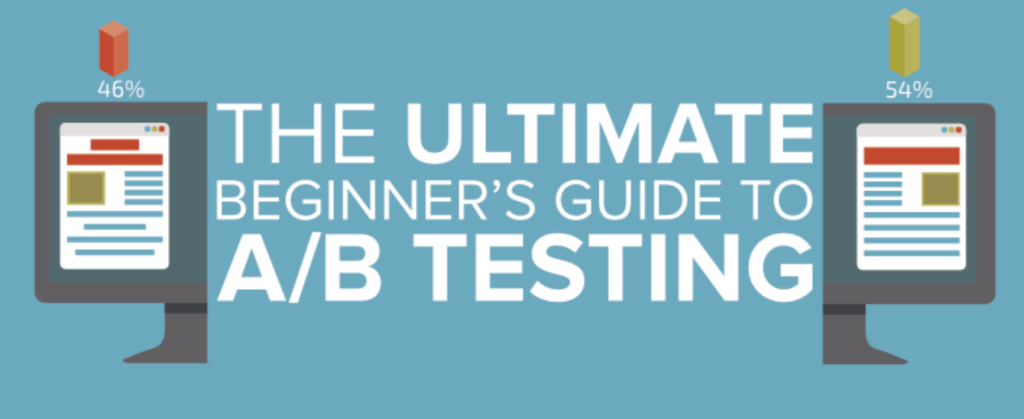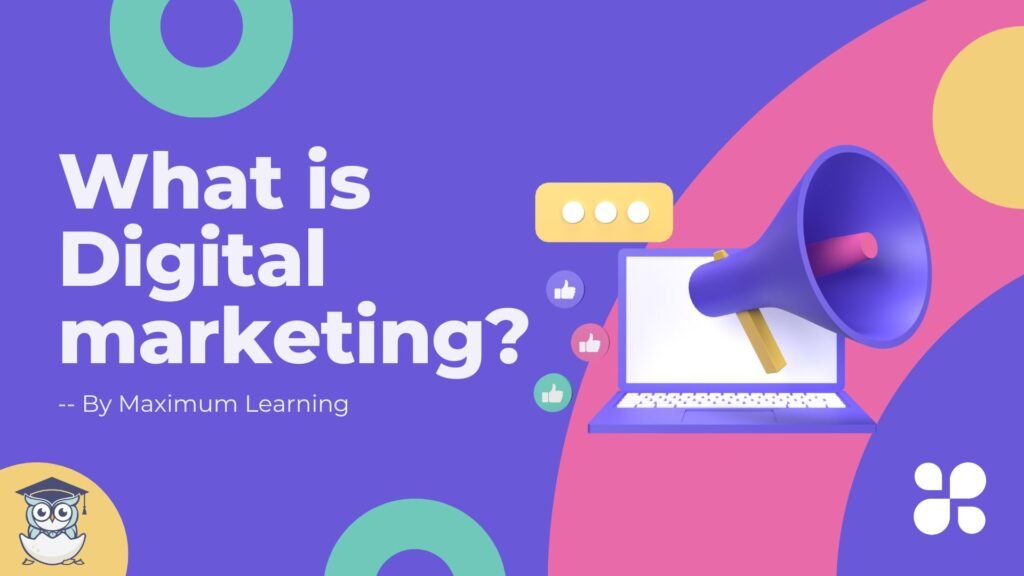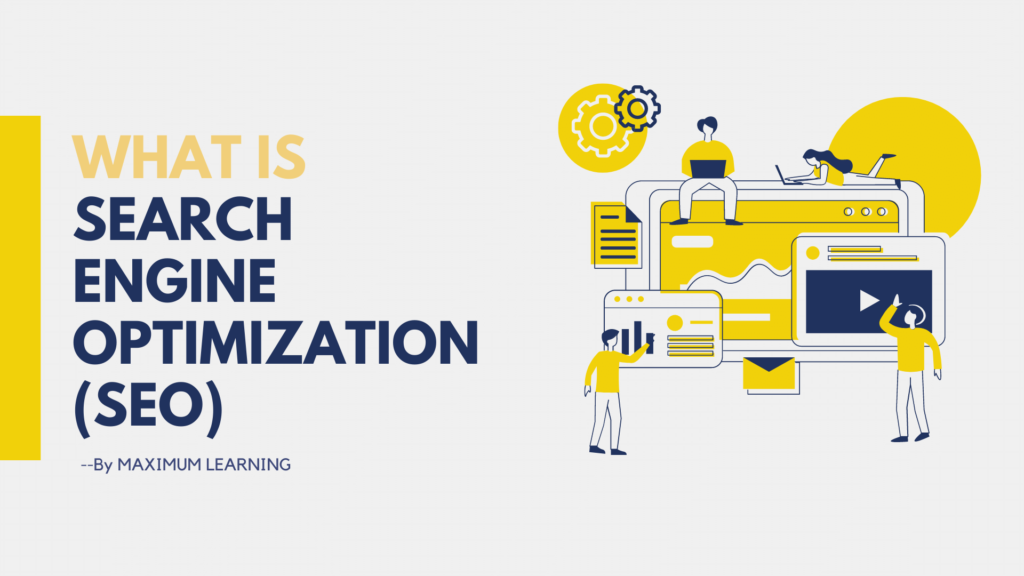A/B testing, synonymous with split testing, stands as a potent and widely employed method within the realm of marketing. Its primary purpose is to meticulously evaluate the efficacy of diverse strategies, enabling marketers to fine-tune campaigns for optimal outcomes. In the subsequent sections of this blog post, we will navigate through the complexities of A/B testing, unraveling its inner workings, and objectives, and offering a comprehensive, step-by-step guide on designing and executing A/B tests. Furthermore, we will delve into the crucial aspect of interpreting A/B testing results and supplement our insights with real-world examples, shedding light on the practical applications of this invaluable marketing tool.
What is A/B Testing?
A/B testing, also known as split testing, is a structured method employed in marketing to assess the performance of two distinct versions of a webpage, email, or any marketing asset. The fundamental process revolves around dividing the target audience into two groups, exposing each to a different variant (Version A and Version B), and subsequently scrutinizing the data to ascertain which variant yields superior results. This approach enables marketers to make data-driven decisions, pinpointing the most effective elements and refining strategies for optimal engagement and conversion rates. Essentially, A/B testing serves as a powerful tool to experiment, analyze, and enhance various aspects of marketing campaigns.
How Does A/B Testing Work?
The mechanics of A/B testing are grounded in a straightforward yet powerful principle. The process involves isolating a single variable within two distinct versions (A and B) of a marketing asset, which could be a webpage, email, or any other component. This variable could be anything from a headline, image, or call-to-action, representing a key element that might influence user behavior.
To execute A/B testing effectively, marketers randomly assign participants from their target audience to either Version A or Version B. By doing so, they ensure a representative and unbiased distribution of users across both variants. Following this exposure, the marketer meticulously tracks and analyzes user interactions and responses to each version, collecting data on metrics such as click-through rates, conversion rates, or other relevant KPIs.
The goal is to observe and quantify how the isolated variable in each version impacts user behavior. By comparing the performance metrics of Version A and Version B, marketers can derive valuable insights into which variant resonates more effectively with the audience. The randomness of participant assignment helps ensure that any observed differences in performance are likely due to the variations in the tested element rather than external factors.
Ultimately, A/B testing provides a systematic and empirical way for marketers to identify the most impactful elements within their campaigns, enabling data-driven decision-making and continuous optimization for better overall performance.
A/B Testing in Marketing:
A/B testing is a versatile tool extensively employed in marketing across various domains to optimize and refine strategies. Here are some key areas where A/B testing proves particularly valuable:
A/B testing emerges as an invaluable strategy to enhance open rates and overall interaction. The primary objective is clear: to elevate the effectiveness of email campaigns. To achieve this goal, marketers strategically deploy A/B testing, focusing on key variables that directly influence a recipient’s decision to engage. Among these variables, subject lines stand out as a critical element, shaping the recipient’s initial perception of the email’s content.
Test Variables: Subject Lines, Content Formats, Send Times
Subject Lines: Recognizing the pivotal role of subject lines in capturing attention, marketers employ A/B testing to experiment with different language, tones, or levels of personalization. This allows for a data-driven approach to understanding which subject line resonates most effectively with the target audience.
Example: A/B testing different subject lines to determine which one prompts higher open rates among the target audience.
Version A Subject Line: Unlock Exclusive Deals Inside
Version B Subject Line: Your VIP Pass to Limited-Time Offers
By rigorously analyzing open rates for each version, marketers gain insights into the preferences and tendencies of their audience.
Content Formats: A/B testing extends beyond subject lines to explore variations in content formats. Marketers experiment with factors such as the length of the email, the inclusion of multimedia elements, or the balance between text and visuals to gauge how recipients engage with different content structures.
Send Times: Acknowledging the significance of timing in email reception, A/B testing includes variations in send times. This enables marketers to identify the periods when their audience is most receptive to communication, thereby maximizing the impact of their campaigns.
Example: A/B Testing Different Subject Lines
Scenario:
Imagine a fashion retailer gearing up for a new collection launch. To ensure the highest open rates, the marketing team decides to conduct an A/B test on subject lines.
Version A Subject Line: Discover Trendsetting Styles: New Collection Inside!
Version B Subject Line: Unlock Your Fashion Upgrade: Explore the Latest Arrivals!
Execution:
The email list is methodically divided into two groups, with Group A receiving Version A and Group B receiving Version B. The team closely monitors open rates, seeking to discern which subject line captivates the audience more effectively.
Analysis:
If Version B generates a substantially higher open rate, the team concludes that the language and approach in Version B resonate more with the audience. This newfound insight becomes a guiding principle for future campaigns, enabling marketers to craft subject lines that consistently boost open rates and foster increased engagement.
Website Landing Pages:
A/B testing proves to be an indispensable tool, strategically employed to enhance conversion rates and refine the overall user experience. With a focus on key variables influencing user engagement, marketers deploy A/B testing to meticulously scrutinize and optimize landing pages for maximum impact.
Test Variables: Headlines, Images, Call-to-Action (CTA) Buttons, Overall Layout
Headlines: Acknowledging the pivotal role headlines play in capturing attention, A/B testing explores variations in language, tone, and length. The goal is to identify the headline that resonates most effectively with the target audience, compelling them to delve deeper into the content.
Images: Visual elements wield a significant influence on user perception. A/B testing involves experimenting with different images, assessing how they complement the content and contribute to the overall appeal of the landing page.
Call-to-Action (CTA) Buttons: The effectiveness of a CTA button is paramount to conversions. A/B testing scrutinizes variations in CTA button text, color, size, and placement to determine which combination incites the desired user action.
Overall Layout: The arrangement of elements on a landing page significantly impacts user navigation and engagement. A/B testing explores different layouts to pinpoint the structure that maximizes user comprehension and interaction.
Example: Comparing Two Versions of a Landing Page
Scenario:
A subscription-based service is launching a new feature and wants to optimize its landing page for user sign-ups. The marketing team decides to conduct an A/B test to identify the most effective combination of headline, image, and CTA for boosting conversion rates.
Version A:
- Headline: “Experience the Next Level in Subscription Services!”
- Image: Vibrant visuals showcasing the new feature.
- CTA Button: “Sign Up Now!”
Version B:
- Headline: “Unlock Premium Benefits: Your Subscription Upgrade Awaits!”
- Image: Illustrations highlighting the key advantages of the new feature.
- CTA Button: “Upgrade Your Subscription Today!”
Execution:
The website traffic is split into two groups, with Group A experiencing Version A and Group B experiencing Version B. The team meticulously monitors user interactions, particularly focusing on conversion rates, to discern which combination drives more sign-ups.
Analysis:
If Version B yields a significantly higher conversion rate, the team deduces that the combination of the alternative headline, image, and CTA is more compelling for the audience. This insight becomes a guiding principle for refining future landing pages and optimizing user journeys.
Ad Campaigns:
A/B testing emerges as a pivotal tool, allowing marketers to systematically refine ad campaigns by experimenting with key variables. Focusing on ad copies, visuals, and targeting strategies, this method empowers advertisers to pinpoint the elements that resonate most effectively with their target audience.
Test Variables: Ad Copies, Visuals, Targeting Strategies
Ad Copies: The language and messaging in ad copies play a central role in capturing attention and prompting user action. A/B testing involves crafting different versions of ad copies to assess which communication style, tone, or call-to-action language resonates most effectively with the target audience.
Visuals: Images and graphics are potent tools in conveying brand messages. A/B testing explores variations in visuals, testing different images, layouts, or graphic elements to identify the visual combination that garners the highest engagement.
Targeting Strategies: The efficiency of an ad campaign hinges on reaching the right audience. A/B testing in targeting strategies involves experimenting with parameters such as demographics, interests, or geographic locations to ascertain the most effective approach for reaching and engaging the intended audience.
Example: A/B Testing Different Ad Copies or Visuals
Scenario:
An e-commerce brand is launching a new product and aims to optimize its digital advertising campaign for maximum click-through rates. The marketing team decides to conduct an A/B test to discern which combination of ad copies and visuals drives better engagement.
Version A:
- Ad Copy: “Unleash the Power of Innovation! Shop Our Latest Arrival Now!”
- Visuals: High-energy images showcasing the product in use.
Version B:
- Ad Copy: “Elevate Your Lifestyle with Our New Arrival – Discover Now!”
- Visuals: Lifestyle-focused images highlighting the product’s benefits.
- Execution:
The ad campaign is split into two groups, with Group A exposed to Version A and Group B to Version B. The team closely monitors click-through rates, aiming to identify which combination generates higher engagement.
Analysis:
If Version B demonstrates a significantly higher click-through rate, the team concludes that the alternative ad copy and visuals resonate more effectively with the target audience. This insight becomes instrumental in refining future ad campaigns to align with audience preferences.
Product Pricing:
With the dual objective of maximizing revenue and comprehensively assessing user responses to pricing changes, A/B testing becomes a cornerstone for businesses seeking to optimize their pricing strategies. Here’s a closer look at the variables tested and a practical example illustrating the impact of pricing changes on user engagement and sales.
Test Variables: Pricing Structures, Discount Offers, Bundling Options
Pricing Structures: The configuration of prices is a critical factor influencing consumer decisions. A/B testing in pricing structures involves experimenting with different models such as tiered pricing, flat-rate pricing, or volume-based pricing to identify the structure that not only attracts customers but also contributes significantly to revenue generation.
Discount Offers: Discounts are powerful motivators for purchases, but the type of discount offered can yield varied results. A/B testing may include comparing percentage discounts, fixed amount discounts, or more complex offers like buy-one-get-one-free (BOGO) to understand which approach most effectively drives user engagement and boosts sales.
Bundling Options: Bundling products or services can influence perceived value and impact consumer choices. A/B testing in bundling options explores various combinations, such as packaging complementary items together or offering discounts on bundled purchases, to determine the most compelling and revenue-maximizing strategy.
Example: Evaluating the Impact of Pricing Changes
Scenario:
An online fashion retailer is contemplating pricing changes for a popular line of clothing items. The marketing team decides to conduct an A/B test to evaluate the impact of different pricing strategies on user engagement and sales.
Version A:
- Pricing Structure: Flat-rate pricing with a 15% discount for purchases over $100.
- Discount Offer: Percentage-based discount.
- Bundling Option: No bundled offers.
Version B:
- Pricing Structure: Tiered pricing with a buy-one-get-one-free offer on select items.
- Discount Offer: BOGO offer for selected items.
- Bundling Option: Discounts for purchasing multiple items together.
Execution:
Both pricing versions are introduced to distinct segments of the target audience. The team monitors user engagement metrics, such as click-through rates, and assesses sales data to understand the impact of each pricing strategy.
Analysis:
If Version B shows a substantial increase in both user engagement and sales, the team concludes that the tiered pricing with a buy-one-get-one-free offer is more effective in enticing customers. This insight guides the retailer in optimizing their pricing strategy for that particular line of clothing items, ultimately maximizing revenue.
A/B testing empowers marketers to systematically test and refine elements within these crucial aspects of marketing, helping them make informed decisions based on empirical data. By pinpointing the most effective variations, marketers can optimize their campaigns, enhance user engagement, and drive better results in terms of conversion and revenue. The adaptability of A/B testing makes it an invaluable asset for marketers aiming to continuously improve their strategies in a dynamic and competitive landscape.
A/B Testing Goals:
A/B testing serves as a dynamic and methodical approach to achieve specific goals, with the overarching aim of refining strategies based on empirical evidence. Here are the primary A/B testing goals, each strategically crafted to enhance various facets of business performance:
Optimizing Conversions
- Goal: Improve conversion rates by identifying and implementing the most effective strategies.
- Approach: A/B testing focuses on isolating and testing individual variables, such as call-to-action (CTA) language, button color, or form fields, to determine which elements contribute most significantly to increased conversions. By systematically analyzing these components, businesses can refine their approach, fostering a higher percentage of users to take desired actions, such as making a purchase, signing up, or downloading content.
Enhancing User Engagement:
- Goal: Tailor content to resonate with the audience, increasing overall engagement.
- Approach: A/B testing in this context delves into various content elements, including headlines, imagery, and messaging tone. By experimenting with different variations and assessing user responses, businesses can identify the content that captivates and resonates most effectively with their target audience. This goal aims not only to attract attention but also to foster prolonged and meaningful interactions, creating a more engaged user base.
Maximizing Revenue:
- Goal: Fine-tune pricing strategies or upsell techniques to boost sales and revenue.
- Approach: A/B testing in pricing strategies involves experimenting with different price points, discount offers, and bundling options to identify the combinations that optimize revenue generation. Additionally, businesses can test various upsell techniques to encourage customers to purchase additional products or choose premium options. By meticulously assessing the impact of these changes on user behavior and sales metrics, businesses can refine their pricing and upselling strategies to maximize overall revenue.
How to Design an A/B Test:
Define Your Objective: Clearly outline the specific goal you want to achieve through the A/B test.
Identify Variables: Choose a single variable to test, ensuring a clear distinction between versions A and B.
Randomize and Split: Randomly assign participants to either A or B groups to ensure unbiased results.
Set Sample Size and Duration: Determine the sample size required for statistical significance and the duration of the test.
How to Conduct A/B Testing:
Implement Changes: Apply the variations to each group as per the test design.
Monitor and Collect Data: Track relevant metrics (click-through rates, conversion rates, etc.) during the test.
Statistical Analysis: Use statistical tools to analyze the data and determine if the results are statistically significant.
How to Read A/B Testing Results:
Identify Winning Variant: Determine which variant performed better based on the chosen metrics.
Statistical Significance: Ensure that the results are not due to chance; look for a statistically significant difference.
Consider External Factors: Account for any external factors that may have influenced the results.
A/B Testing Examples:
Email Marketing: Test different subject lines to see which generates higher open rates.
Website Design: Compare two versions of a landing page to identify the one with a better conversion rate.
Ad Copy: Assess the effectiveness of different ad copies to improve click-through rates.
A/B testing, synonymous with split testing, stands as a potent and widely employed method within the realm of marketing. Its primary purpose is to meticulously evaluate the efficacy of diverse strategies, enabling marketers to fine-tune campaigns for optimal outcomes. In the subsequent sections of this blog post, we will navigate through the complexities of A/B testing, unraveling its inner workings, and objectives, and offering a comprehensive, step-by-step guide on designing and executing A/B tests. Furthermore, we will delve into the crucial aspect of interpreting A/B testing results and supplement our insights with real-world examples, shedding light on the practical applications of this invaluable marketing tool.
Analysis: Use statistical tools to analyze the data and determine if the results are statistically significant.
How to Read A/B Testing Results:
Identify Winning Variant: Determine which variant performed better based on the chosen metrics.
Statistical Significance: Ensure that the results are not due to chance; look for a statistically significant difference.
Consider External Factors: Account for any external factors that may have influenced the results.
A/B testing is an invaluable tool for marketers looking to refine their strategies and achieve optimal results. By following the outlined steps and principles, businesses can make data-driven decisions that significantly impact their overall success. Start experimenting, analyzing, and optimizing to unlock the full potential of your marketing efforts through A/B testing.




